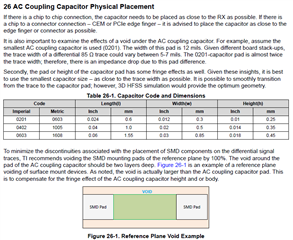Tool/software:
Hi Support Team,
There is an 20 inch PCIe 2.0 trace between CPU and NIC in our design, we design to use DS80PCI102 to ensure the signal quality.
Please can you help to check if there is anything wrong with my schematic ?

The questions are:
1. The PCIe2 diff impedance on CPU board is 85ohm that we can't change. Pls help to confirm if DS80PCI102 can support 85ohm for both Tx and Rx path ?
2. The AC coupling cap on CPU board is 220nF that we can't change. Pls help to confirm if this value is OK for DS80PCI102 on both Tx and RX path ?
Thanks very much !
Tom



